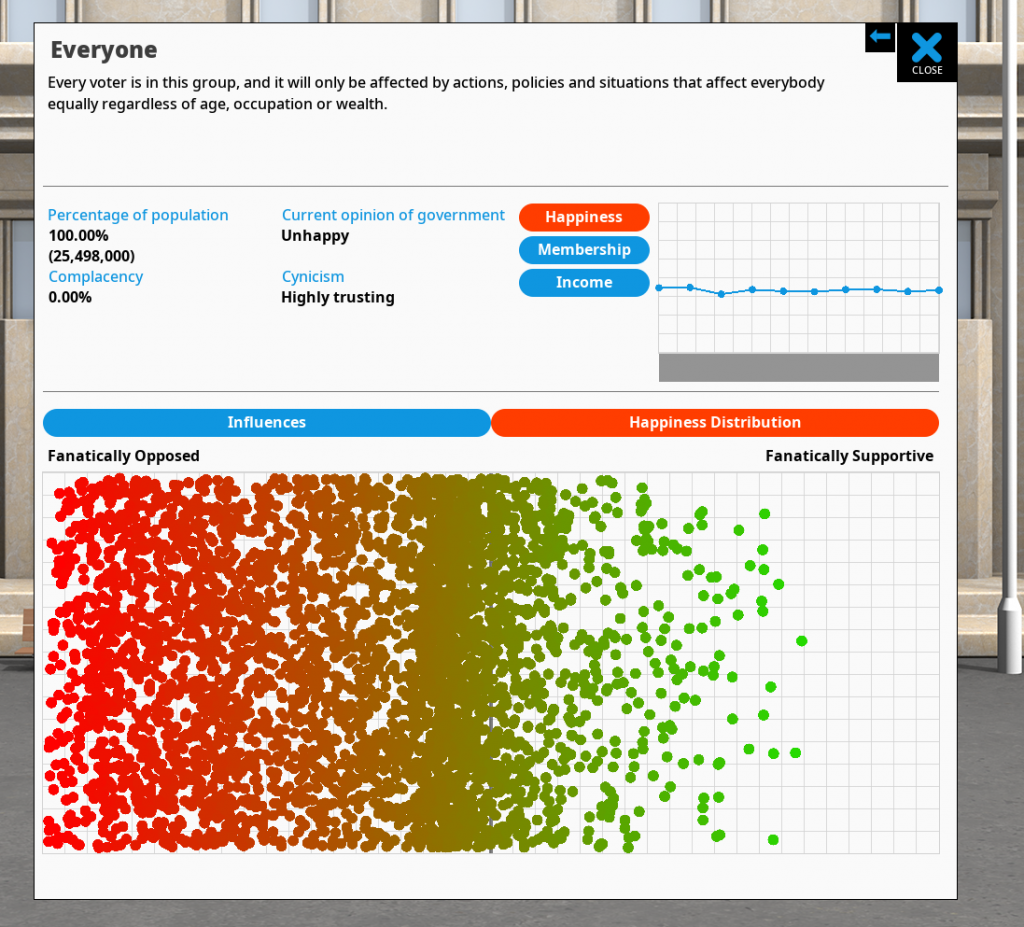I’m currently balancing Australia in Democracy 4, and its tough as almost any starting condition seems to result in a depressingly small number of people supporting the current party. I have been fiddling with the numbers for this for hours, and its occurred to me that its SO much harder in a 3 party system, and the game may be having trouble conveying this…
Take this screenshot:

Thats the current voter breakdown at the start of the Australia mission. Actually a few people are quite clearly over the 50% mark (to the right) and thus are more happy than unhappy, and in a 2 party election, things here would be looking bad…but not catastrophic.
But in a 3 party system, only people who have happiness of 66%+ are going to vote for you. Your polling numbers are going to be an absolute nightmare. But on the other hand, you do NOT need 50% of the vote to win, only >33% in order to be the largest party in a coalition.
This leads me to another conclusion… The current system has the opposition party taking a 100% opposed view to you on all issues. A 3rd party, if it exists, will take a position between the two, meaning its generally going to be trying to please socialists & capitalists plus liberals & conservatives.
Put another way… the 2nd opposition party will always be pretty moderate. That gives them a bit of an advantage, as they can vacuum up votes from all over the spectrum.
I do NOT plan on actually modelling all the political stances of opposition parties. This is a HUGE undertaking and outside the scope of this game. However, I would like to improve the current situation.
One thought running through my mind is that the 3rd party perhaps should be assumed to be suffering from some sort of ‘small party disadvantage’. So instead of happiness mapping onto votes like this:
0-33% opposition
33-66% 3rd party
66%-100% player
It could map like this:
0-40% opposition
40-66% 3rd party
66%-100% player
…or something similar. I am just brainstorming this right now. I think that there are basically 2 problems apparent here:
- The game is maybe a bit too hard for the player in 3 party systems
- The simple display of voting intentions on the main screen is perhaps a bit pessimistic in 3 party systems.
Feedback and suggestions are most welcome.